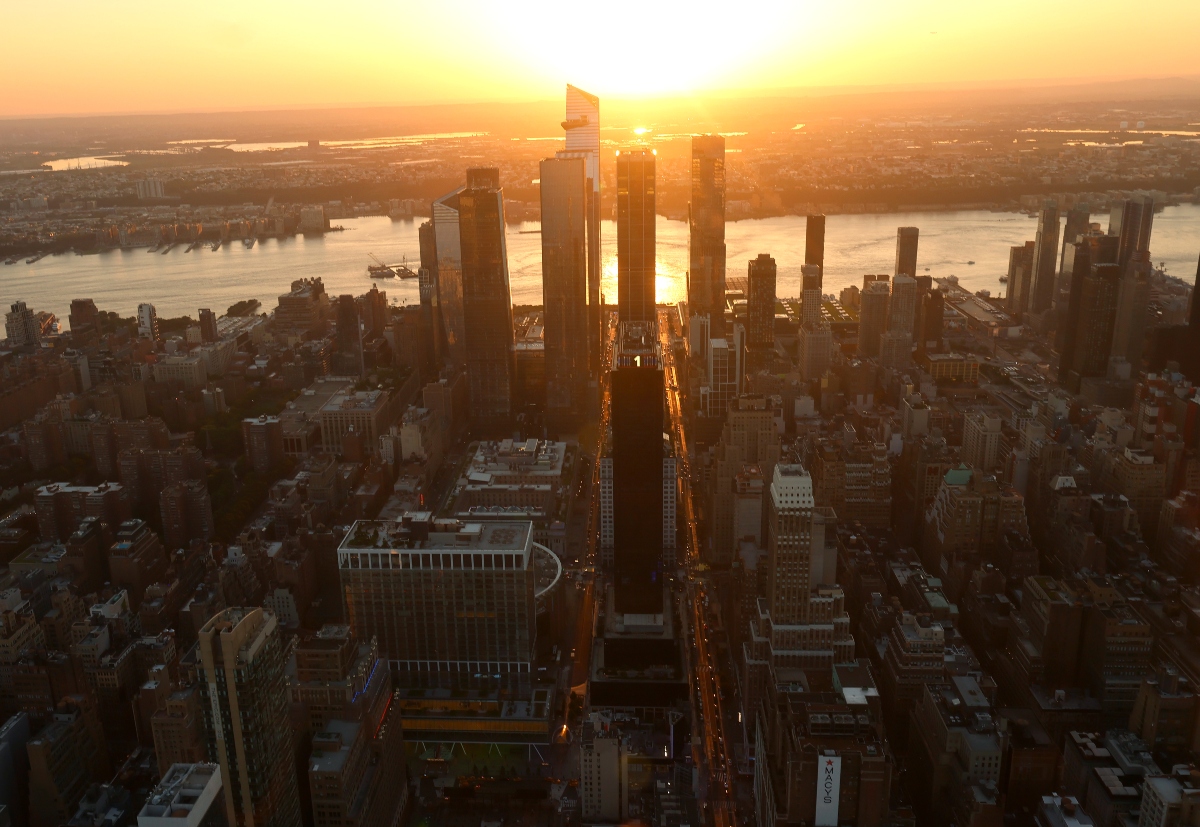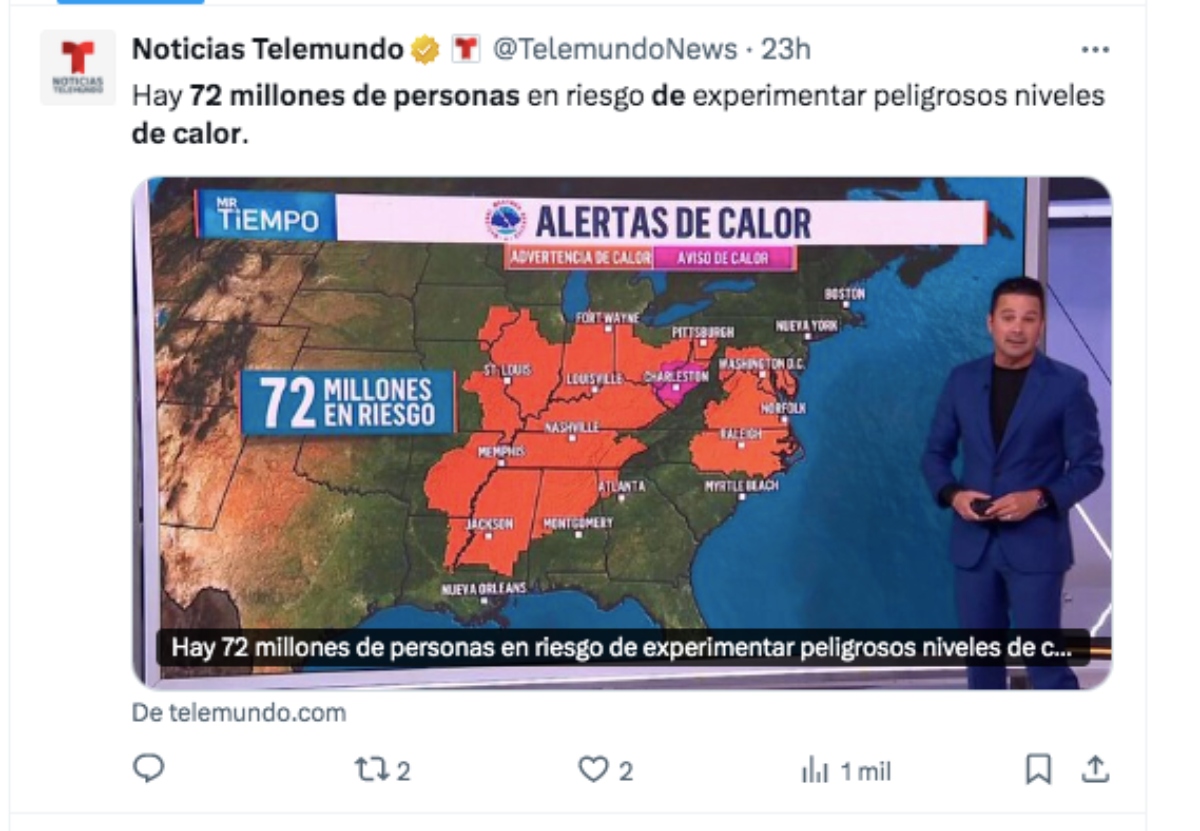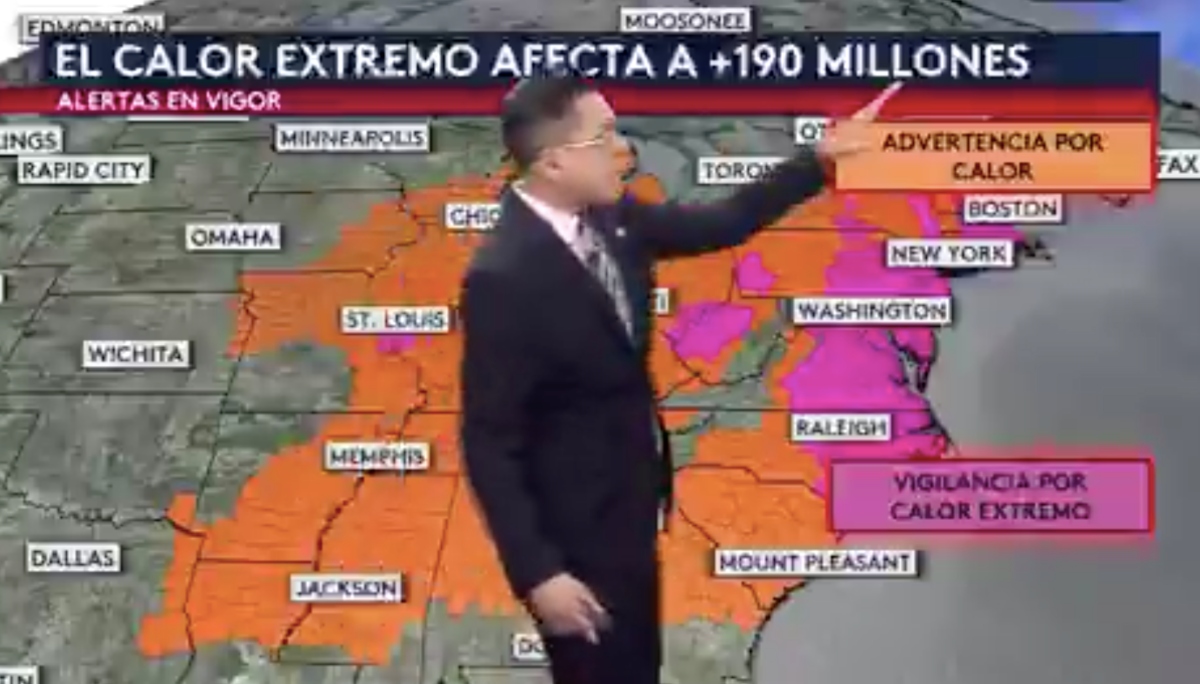An intense heat wave is currently affecting the United States, with more than 170 million people under extreme heat alerts, according to the National Weather Service (NWS).
This phenomenon, driven by a high-pressure dome or “heat dome,” has raised temperatures to record highs in more than 36 states, including cities such as Washington D.C., Philadelphia, New York and Boston, where temperatures above 38 °C (100 °F) have been recorded.
What is a heat dome and why is it dangerous?

A heat dome is a high pressure system that traps hot air near the earth’s surface, preventing its dispersion.
This phenomenon causes continuous warming and clear skies, which intensifies temperatures and humidity.
The consequences include nights without thermal relief, increased cases of heat-related illnesses and higher energy demand for cooling.
Public health impact

Extreme heat poses a significant health risk, especially for children, older adults, people with chronic diseases and outdoor workers.
Symptoms of heat-related illnesses include dizziness, nausea, muscle cramps and, in severe cases, heat stroke, which can be fatal.
In 2023, 2,325 heat-associated deaths were recorded in the U.S., setting an annual record.
Recommendations for protection from extreme heat

Public health authorities and organizations recommend:
Avoid outdoor activities during the hottest hours of the day (12:00 p.m. to 6:00 p.m.).
Stay hydrated by drinking water regularly, even if you are not thirsty.
Wear light, light-colored clothing to reflect heat.
Seek shelter in air-conditioned places or in cooling centers set up by local authorities.
Pay attention to signs of heat exhaustion and seek medical attention if necessary.
In addition, it is advisable to check the health status of vulnerable neighbors and family members, especially those living alone or without access to air conditioning.
La ola de calor se extenderá por las próximas dos semanas en todo el país lo que sin duda desata la alarma para que la población se resguarde, sigue hidratada y al pendiente de la energía eléctrica por las sobrecargas
Economic considerations
The increased use of cooling systems has led to higher electricity bills, which could reach their highest level in 12 years, averaging $784 per household over the summer.
Low-income families are the most affected, as many face difficulties in paying these additional costs.
The current heat wave in the United States is one of the most intense on record, affecting more than 170 million people.
It is crucial for the population to take preventive measures to protect their health and that of their loved ones.
Staying informed through official sources and following the recommendations of the authorities can make a difference during this period of extreme heat.
Find out more at ‘QueOnnda.com’.














